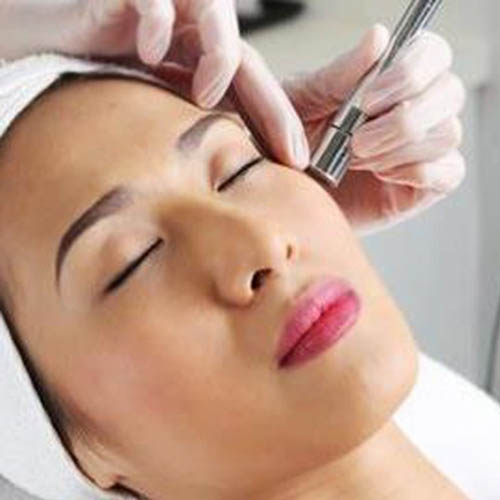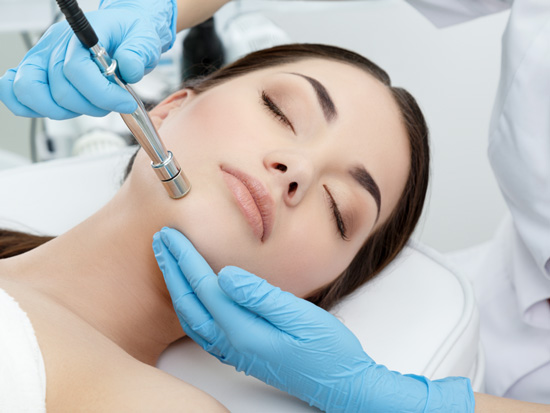
From the beginning of time, people suffering from the disfigurement of facial scarring have searched for ways to improve these imperfections. Today, there are a variety of dermatologic surgical procedures that are safe and effective. Refinements in technique, equipment, and pre- and post-operative care have enhanced the popularity of dermabrasion, which has been used for years.
Dermabrasion, or skin planing, is a surgical Procedure in which the dermatologist removes or "sands" the skin with a rotary abrasive Instrument to improve its contour. Dermabrasion Should not be confused with "micro- Dermabrasion," which is a superficial techninque. For minor skin problems dermabrasion creats a skin wound, much like an accidenal abrasion, which requires serveral days to a week or more to Heal. The healed skin generally has a smoother appearance.

When dermabrasion was first developed, it was used predominantly to improve scars resulting from acne, chicken pox, and accidents. Today, it is also used to treat tattoos, age spots, chronic sun Damage, wrinkling, precancerous skin degeneration and other diseases.
Before surgery, a medical history is taken and a careful examination is conducted in order to evaluate the condition of the patient's skin. During the consultation,the dermatologist describes dermabrasion and possible alternative treatments, potential results that might realistically be expected, possible risks, complications, and the type of anesthesia to be used. Photographs are frequently taken before And after surgery to help evaluate the amount of improvement. Medication to prevent activation of fever blisters (herpes simplex) may be prescribed for susceptible individuals.

Dermabraslon can be performed in the dermatologist's office or in an outpatient surgical facility. Medication to relax the patient may be given prior to surgery. The area is thoroughly cleansed with an antiseptic agent before application of a spray that freezes and numbs the skin. Alternatively, an anesthetic agent is injected to numb the skin. A high-speed rotary instrument with an abrasive wheel or brush removes (abrades) the upper layers of the skin to improve irregularities in the skin's surface. Soothing ointments and a dressing are then applied.
For a few days, the skin feels as if it has been severely sunburned. Medications may be prescribed to alleviate discomfort, but most people do not experience severe pain. Special dressings and emollients help speed the skin's recovery. Healing usually occurs within 10 days. The newly formed skin is pink at first and gradually returns to its normal appearance in 8 to 12 weeks. After the initial healing time, makeup can be used as a cover-up, and people can resume their normal activities in 7 to 10 days. Patients are instructed to use a sunscreen daily and to avoid unnecessary direct and indirect exposure to sunlight for several months.
Each person's skin heals differently. Some individuals tend to develop increased (hyper) or decreased (hypo) pigmentation after treatment. Bleaching preparations may be used to treat hyperpigmentation. Patients with clotting or bleeding disorders, keloidal scarring, immunosuppression, or those who have taken oral retinoids (13-cis- retinoid acid), or isotretinoin must inform the dermatologist prior to the procedure.
Dermabrasion cannot be expected to Eliminate or improve all scars. Some deeper Scars require the use of other procedures to obtain The best results. These include surgical removal Of the scars followed by small skin grafts or Suturing. Dermabrasion may be used 6 to 8 Weeks later to smooth over these fresh scars.
Some patients may benefit from repeat touch-up Dermabrasion of areas that have not been Sufficiently improved after the initial procedure. Other patients may benefit from the use of filling Substances such as collagen, hyaluronic acid, or Fat that can be used in conjunction with Dermabrasion to elevate depressed scars.